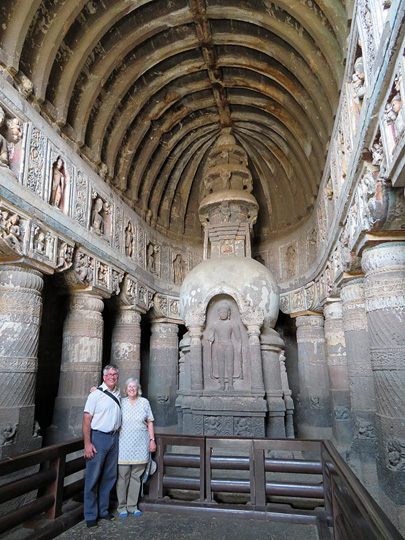Thursday, 23 March 2017
Buddhist temple caves always feature a stupa, which got more elaborate as the centuries progressed.
The viharas at Ajanta have a Buddha shrine in the middle of the back wall.
Buddhist temple caves always feature a stupa, which got more elaborate as the centuries progressed.
 |
| Cave 10 is thought to be the oldest cave at Ajanta. Since it is from the early period, the stupa is very plain. |
 |
| Cave 9 is another early cave with a plain stupa. |
 |
| Cave 19 is from the later period. The stupa now has an image of the Buddha on it and the entire cave has more elaborate artwork. What looks like wooden “ribs” on the ceiling is actually carved in stone to make it look like the roof has wooden beams. To my knowledge, only the chaitya cave at Karla has real wood in the ceilings. |
 |
| Cave 26 is the final and most elaborate stupa at Ajanta. Again, the ceiling is stone, not wood. |
 |
| A view from behind the stupa in Cave 26. |
The viharas at Ajanta have a Buddha shrine in the middle of the back wall.
 |
| The Buddha image at the back of Cave 2, a late-phase cave. You also get a hint of some of the fresco-like paintings which are uniquely preserved at Ajanta. (More about those in the next post.) |
 |
| The Buddha image in Cave 16. |
 |
| A barely-started sculpture, this shows how the figure was sketched on the stone before the carving started. |



No comments:
Post a Comment